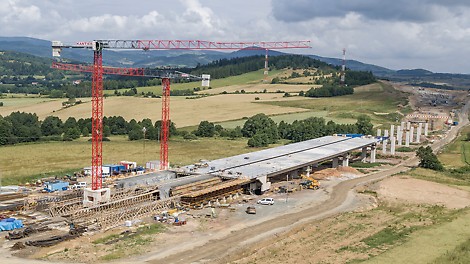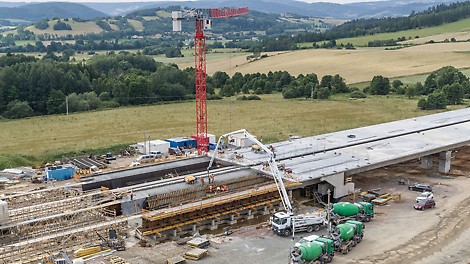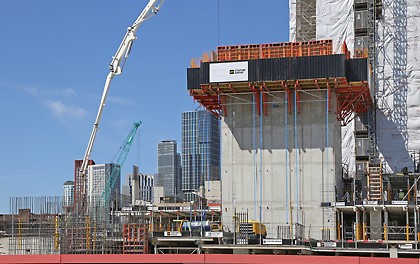
Últimas notícias e comunicados de imprensa PERI
04
jul
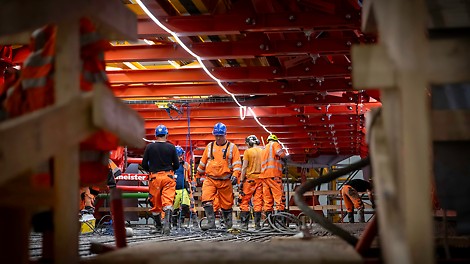


Important Milestone reached in the Fehmarnbelt Tunnel project: All five production lines for standard tunnel elements in operation
At the time of its completion, the 18 km long Fehmarnbelt Tunnel will be the longest immersed tunnel in the world and is currently the largest infrastructure project in Northern Europe. PERI developed a formwork solution for the production of the 79 standard tunnel elements, characterized by high performance, productivity and compliance with high safety standards. The standard tunnel elements are manufactured in parallel on five production lines, with the latest line having commenced operations in February 2024.
29
mai
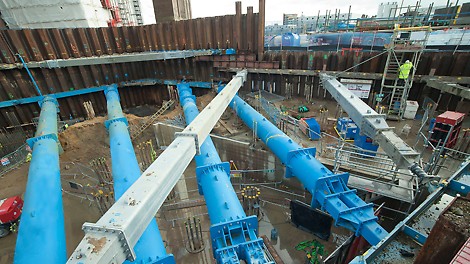
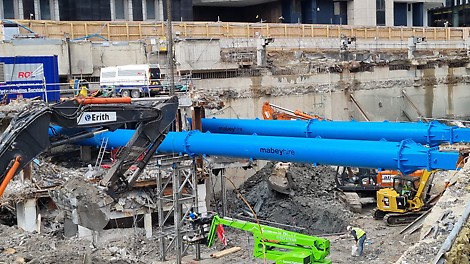

Mabey Hire Ltd. becomes part of the PERI Group
With effect from 21.05.2024, the PERI SE (Weissenhorn, Germany) has taken over Mabey Hire Ltd., headquartered in Dewsbury (UK).
17
abr
Above water and clouds: Danjiang Bridge reaches record-breaking proportions with PERI Systems
The Danjiang Bridge over the Tamsui River on the outskirts of Taipei is taking giant strides towards record-breaking proportions. The structure, designed by Zaha Hadid, is expected to be the world’s longest asymmetric cable-stayed bridge upon completion in 2025, at an impressive 920.00 metres.
28
mar
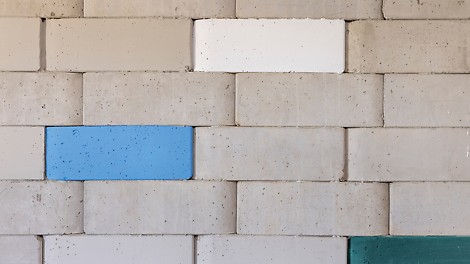


Opening of new school in Kenyan slum: The very first PERI school provides opportunities for the future
In Kenia wurde die erste Schule im Rahmen des PERI Nachhaltigkeitsprogramms feierlich eröffnet
The very first PERI school in Kenya opened its doors at the end of February 2024 for over 200 children. In Kibera, the largest slum in Nairobi, the first school in the PERI sustainability initiative “Building Sustainability” was built in less than a year. In collaboration with the social enterprise “Start Somewhere”, PERI developed what are known as TwistBlock Moulds for hollow concrete blocks, which were designed specifically for use in slums due to the simple and flexible manner in which they can be used. The new school building has created not only learning spaces, but also new local job opportunities.
20
mar
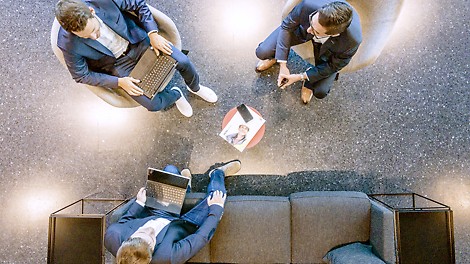

PERI is a member of buildingSMART International
• PERI SE is a member of buildingSMART International and in local chapter buildingSMART Deutschland • Common openBIM approach for formwork and scaffolding construction • Design and implementation of openBIM in the construction process
13
fev
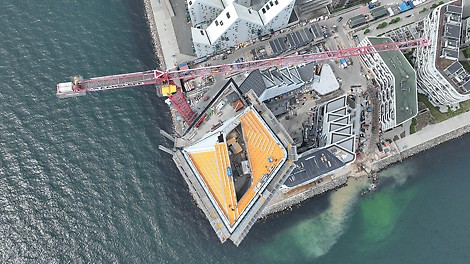


Prêmio para o edifício residencial mais alto da Dinamarca
O projeto de construção "Lighthouse 2.0" criou um novo espaço de convivência com 381 novos apartamentos no distrito de "Aarhus Ø", não muito longe do centro da cidade de mesmo nome. Com sua impressionante altura de 142 metros, o edifício é o edifício residencial mais alto da Dinamarca desde sua conclusão em 2022. Os andares superiores abrigam um restaurante e um terraço aberto ao público - com vistas fantásticas do porto, do mar e da cidade. O projeto recebeu agora um prêmio de "Melhor Edifício Alto" na categoria "100 a 199 metros" da organização sem fins lucrativos, o "Conselho de Edifícios Altos e Habitat Urbano" (CTBUH).
13
dez
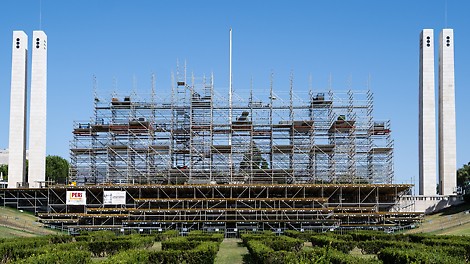
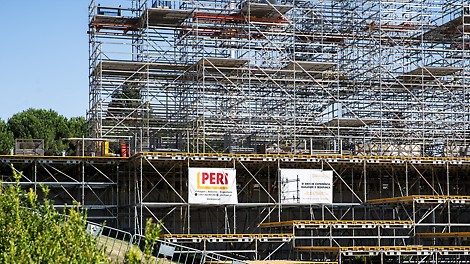
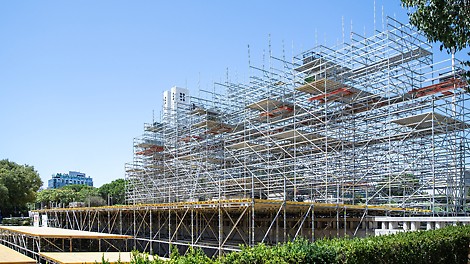
Visionary stage design realised with 200 tonnes of PERI UP scaffolding
World Youth Day (WYD) is an international event where young people from all over the world gather every two or three years to meet the Pope. Founded by Pope John Paul II, WYD was first held in Rome in 1986 and has since been held in numerous cities around the world. In 2023, the event was organised in Lisbon during the first week of August and attracted around 1.5 million participants.
20
set
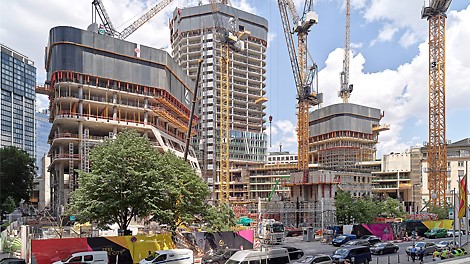
Four towers grow at once thanks to PERI systems
Four up to 233-m-high futuristic towers will soon soar high into the heart of Frankfurt’s skyline in keeping with the project’s slogan “Feel the City”. PERI is playing an instrumental and successful role in the FOUR Frankfurt inner-city project with a wide range of systems from the formwork, scaffolding and climbing technology segments subject to the most stringent safety regulations and a sophisticated logistics concept.
20
set
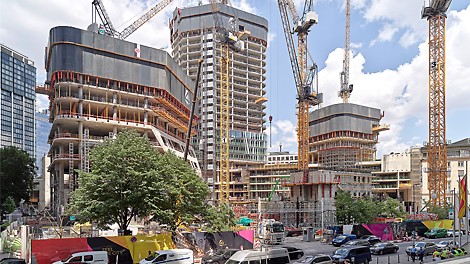
Four towers grow at once thanks to PERI systems
Four up to 233-m-high futuristic towers will soon soar high into the heart of Frankfurt’s skyline in keeping with the project’s slogan “Feel the City”. PERI is playing an instrumental and successful role in the FOUR Frankfurt inner-city project with a wide range of systems from the formwork, scaffolding and climbing technology segments subject to the most stringent safety regulations and a sophisticated logistics concept.
11
ago
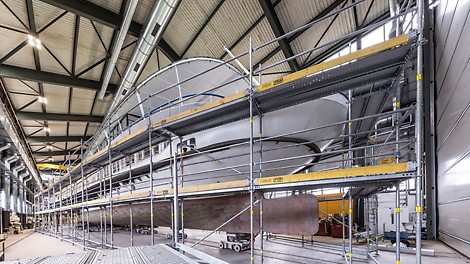
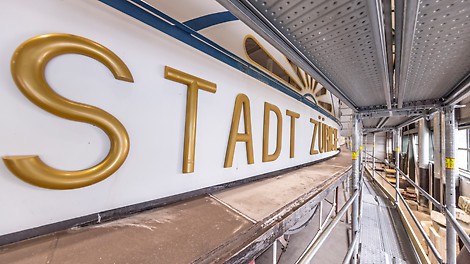
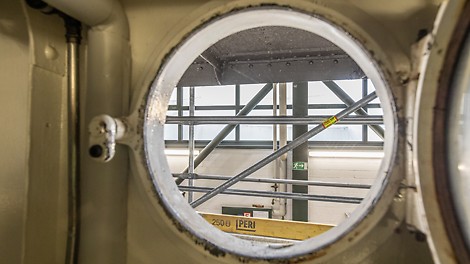
Dry docking and maintenance of “Stadt Zürich”, Zurich, Switzerland
The Zürichsee-Schifffahrtsgesellschaft (ZSG), with more than 100 employees, offers around 1.2 million passengers an idyllic experience year by year, framed by the panorama of the picturesque Swiss Alps. To ensure that the fleet of 17 ships can reliably cover 360,000 kilometres per year on Lake Zurich, it requires regular maintenance.
11
ago



Dry docking and maintenance of “Stadt Zürich”, Zurich, Switzerland
The Zürichsee-Schifffahrtsgesellschaft (ZSG), with more than 100 employees, offers around 1.2 million passengers an idyllic experience year by year, framed by the panorama of the picturesque Swiss Alps. To ensure that the fleet of 17 ships can reliably cover 360,000 kilometres per year on Lake Zurich, it requires regular maintenance.
29
jun
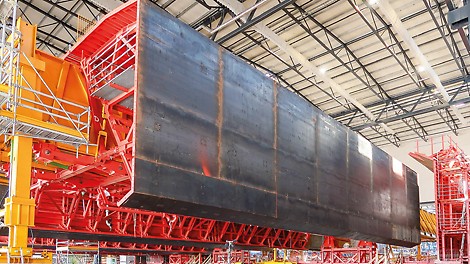
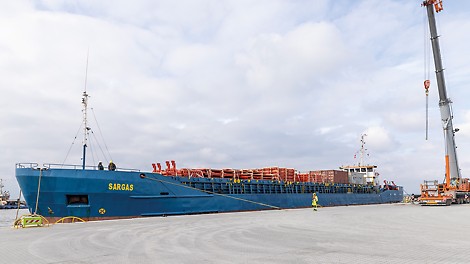
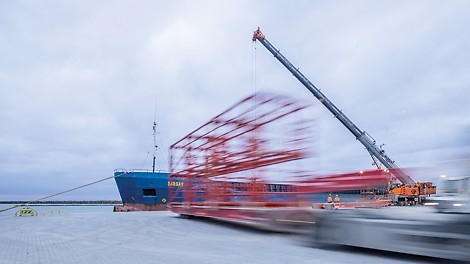
Milestone in the construction of the Fehmarnbelt Tunnel: PERI delivers 10,000 t of special formwork
With a length of 18 km, the Fehmarnbelt Tunnel will be the longest immersed tunnel in the world and is considered one of the largest infrastructure construction sites in Europe. PERI developed a formwork concept for the central production of the standard tunnel elements.
25
mai

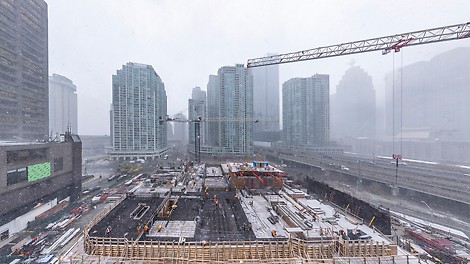
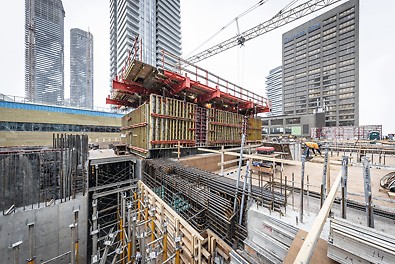
The Tallest Residential Tower in Canada is beginning to rise with PERI Climbing Systems
The Pinnacle One Yonge project is a multi-phase development, designed by Hariri Pontarini Architects. With its prominent location, across from Toronto’s harbour, the sleek, masterfully designed towers will reshape the city’s skyline. The first three phases of the One Yonge project include residential towers that are 65, 105 and 92 storeys tall respectively.
13
jan
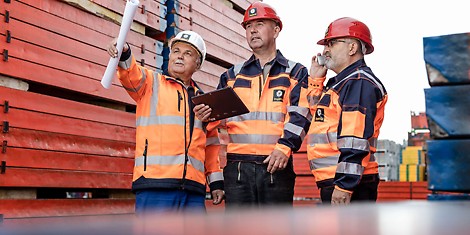
PERI acquires Implenia Schalungsbau GmbH
With effect from 1 January 2023, PERI Vertrieb Deutschland GmbH & Co. KG has acquired Implenia Schalungsbau GmbH in Bobenheim-Roxheim, Germany. For the time being, the company will be managed under the name PERI Schalungsbau GmbH as a subsidiary of PERI Germany.
13
jan

PERI adquiere Implenia Schalungsbau GmbH
Con efecto a partir del 1 de enero de 2023, PERI Vertrieb Deutschland GmbH & Co. KG ha adquirido Implenia Schalungsbau GmbH en Bobenheim-Roxheim, Alemania. Por el momento, la empresa será gestionada bajo el nombre PERI Schalungsbau GmbH como filial de PERI Alemania.
09
jan
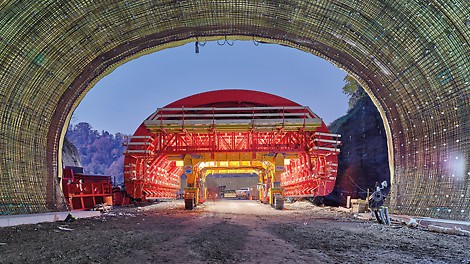


Primer carro de encofrado totalmente hidráulico con tracción sobre orugas
El proyecto A26 es uno de los proyectos de infraestructura más importantes de la ciudad austriaca de Linz y sus alrededores, con el objetivo de aliviar la congestión en su red de transporte urbano. La clave del éxito durante la etapa de ejecución del proyecto fue una solución de ingeniería PERI que fuera innovadora, segura y eficiente en igual medida, junto con un amplio apoyo al proyecto. Lo más destacado: El primer carro de encofrado para túneles totalmente hidráulico con tracción sobre orugas en Austria.
01
jan



Various tunnel cross-sections with first fully hydraulic formwork carriage with caterpillar drive
The A26 project is one of the most important infrastructure projects in the Austrian city of Linz and the surrounding area with the goal to ease congestion on its urban transport network. The key to success during the project implementation stage was a PERI engineering solution that was innovative, safe and efficient in equal measure, coupled with comprehensive project support. The highlight: The first fully hydraulic tunnel formwork carriage with a caterpillar drive in Austria.
22
nov
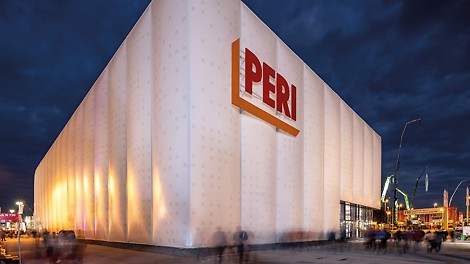

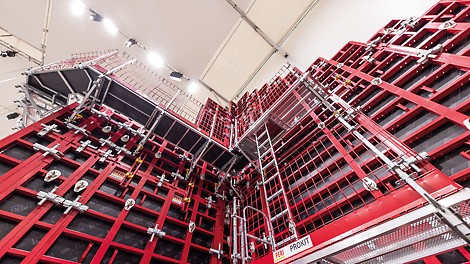
PERI is reflecting on a successful bauma 2022
With more than 200,000 visitors, the PERI exhibition hall at bauma 2022 was a visitor magnet. PERI is now reflecting on a very successful trade fair featuring numerous innovations from the formwork and scaffolding sector as well as exciting talks and discussions. In addition to a comprehensive facelift for the MAXIMO Panel Formwork, additions to the PERI UP Scaffolding Kit and ground-breaking key digital technologies, PERI showcased alternative and sustainable construction methods using MESH technology and TwistBlock Moulds.
27
out


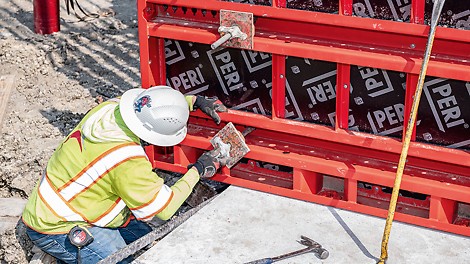
Innovative VARIOKIT Pier System – High performance for bridge pier construction
Simultaneously to bauma 2022, PERI will be presenting the VARIOKIT Pier System, a system on the market which aims to revolutionise bridge construction. PERI, one of the leading manufacturers and suppliers of formwork and scaffolding systems for the modern construction sector, is setting a new standard in bridge construction with the introduction of VARIOKIT Pier System (VPS). VPS brings together safety and efficiency to provide a versatile, high-performance system for the construction of bridge piers and pier caps. VPS is based on the VARIOKIT Engineering Construction Kit, which means that almost all project requirements can be met using rentable solutions.
24
out
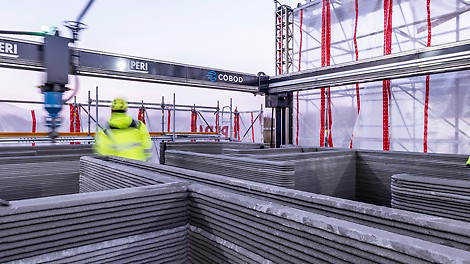
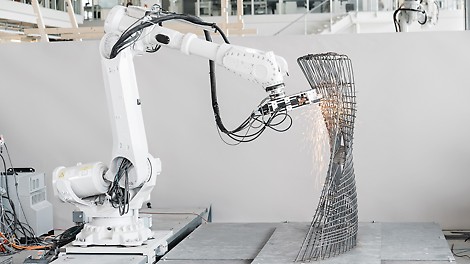
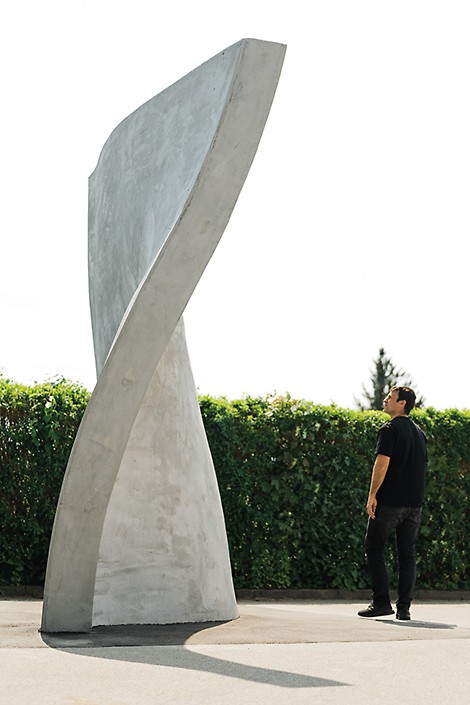
Shaping the future: PERI presents innovative technologies for more efficiency
With the motto “Shaping the future”, the PERI exhibition hall will open its doors on the open-air North site (Booth FN 719) at bauma 2022 in Munich from 24 to 30 October 2022. In addition to innovations from the formwork and scaffolding sector, PERI will present digital technologies for the construction projects of tomorrow. Visitors can look forward to a variety of digital planning tools, innovations in PERI InSite Construction sensor technology, the new myPERI Customer Portal and a live demonstration of 3D Construction Printing. The MESH technology, which is among the finalists for the bauma Innovation Award, is celebrating its première.
24
out
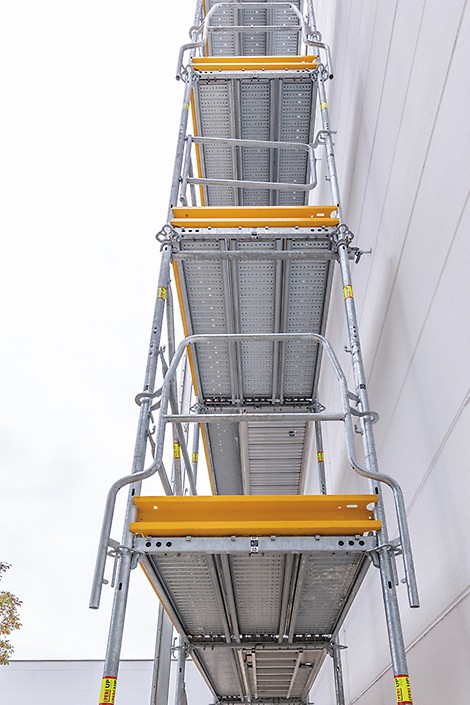
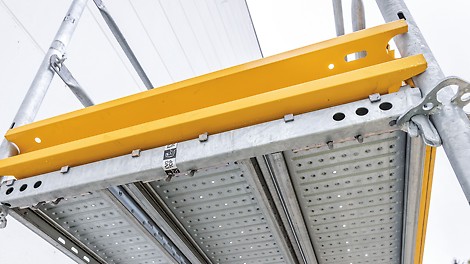
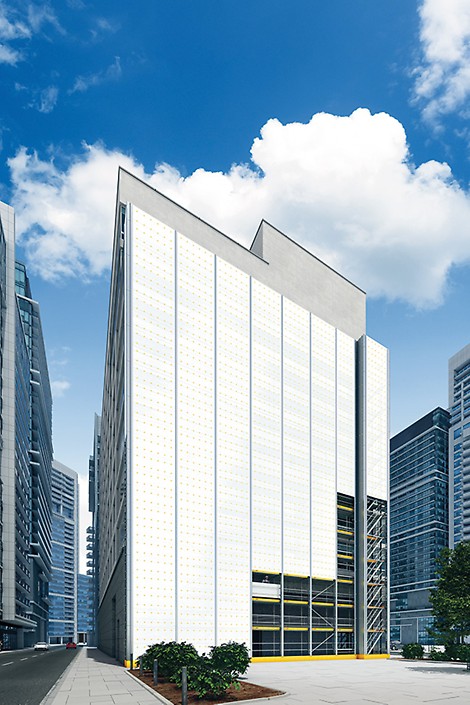
Achieving success in the scaffolding trade with PERI innovations
With the motto “Shaping the future”, the PERI exhibition hall will open its doors on the open-air site North (booth FN 719) from 24 to 30 October 2022 in Munich. A number of innovations that make scaffolding construction quicker, safer and more economical will be showcased. Something that is always at the heart of PERI’s developments is the long-term and sustainable success of the scaffolding contractor.
24
out

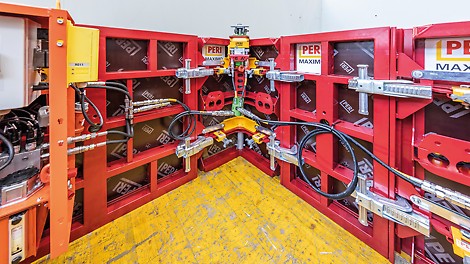
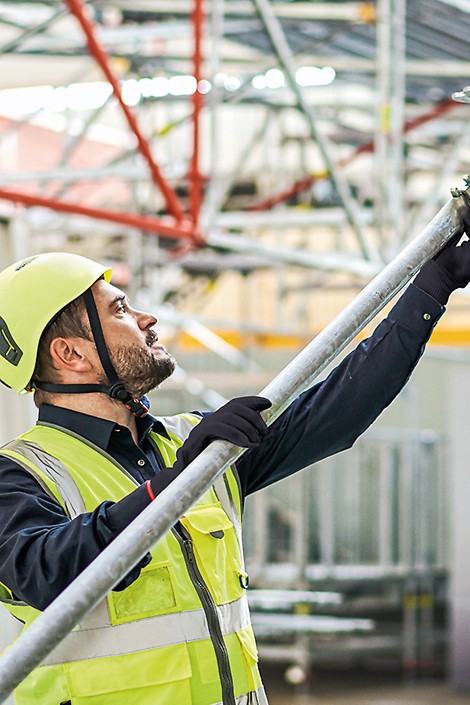
Shaping the future: PERI presents innovations for the construction industry at bauma
With the motto “Shaping the future”, the PERI exhibition hall will open its doors on the open-air North site (booth FN 719) at bauma 2022 in Munich from 24 to 30 October 2022. With a facelift of the tried-and-tested MAXIMO Panel Formwork, innovations from the slab formwork sector as well as new digital and disruptive technologies, such as the PERI InSite Construction sensors, 3D Construction Printing and the MESH technology, the formwork and scaffolding manufacturer is preparing the construction industry for the construction site of tomorrow. In addition, visitors can experience first-hand how the topic of sustainability is promoted at PERI with many practical examples.
29
set
Project-specific PERI solution for new Frankfurt skyscraper
At a height of around 190 m, the new 49-storey office and hotel tower ONE by CA Immo is an integral part of the skyline of Frankfurt’s metropolis on the River Main. The skyscraper attracts attention in particular due to its triangular cantilever on the 33rd floor, which is visually reminiscent of the number “1” and lends the building its name.
10
ago
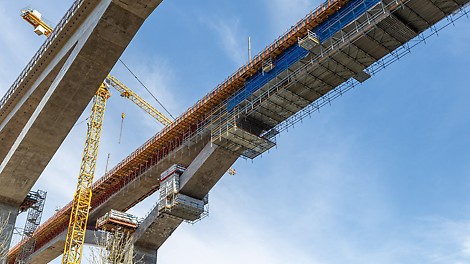
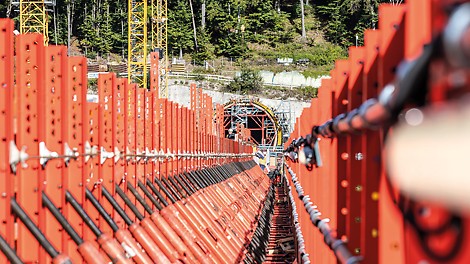
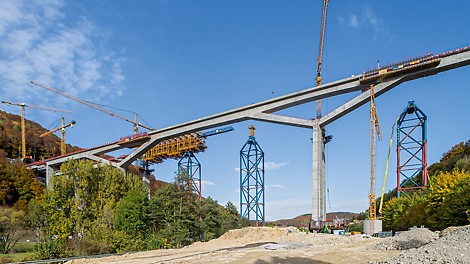
Building bridges with solution expertise and modular systems
Customer-oriented planning and services combined with coordinated modular systems form the basis for developing formwork and scaffolding solutions that are suitable for almost any site requirements, including complex infrastructure projects. Experienced PERI engineers assisted with the construction of the Filstal Bridge, bringing their extensive solution expertise to bear.
21
jul
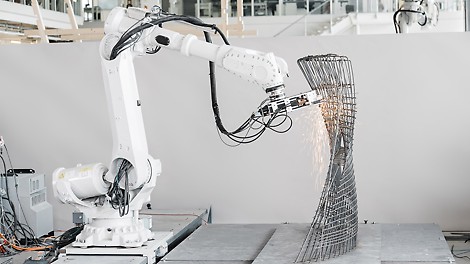
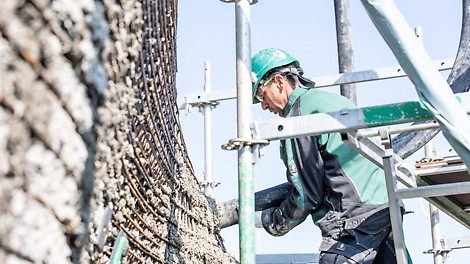
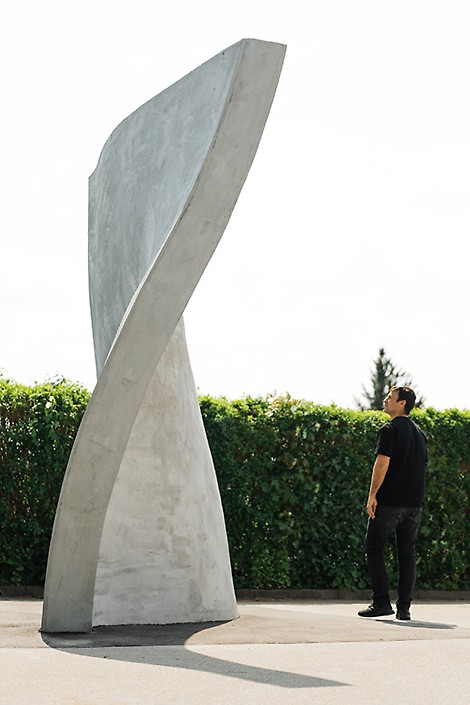
New technology for demanding concrete structures
Weissenhorn/Zurich, 21.07.2022. PERI SE and Sika AG are taking a stake in the Swiss startup Mesh AG. Mesh AG has developed the world's first robot-assisted technology for the efficient and cost-effective production of complex reinforced concrete structures without formwork.
29
jun

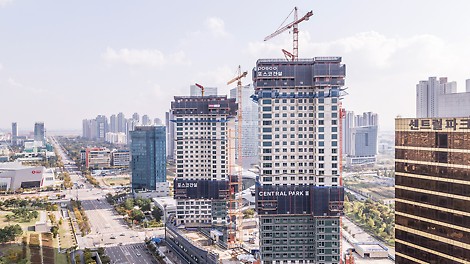
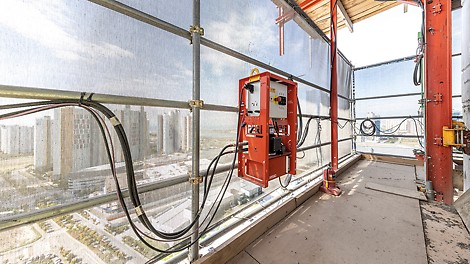
Synchronous climbing of all platforms: First use of the RCS MAX in South Korea
Only a few kilometres away from the South Korean capital Seoul, two new 140 m high luxury residential towers were built under strict safety requirements and within a tight construction time. PERI met the demand for efficient construction as well as low personnel costs with the new and innovative RCS MAX Rail Climbing System. A premiere, because RCS MAX was used here for the first time on South Korean soil.
28
jun
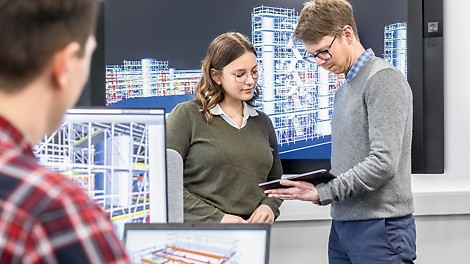
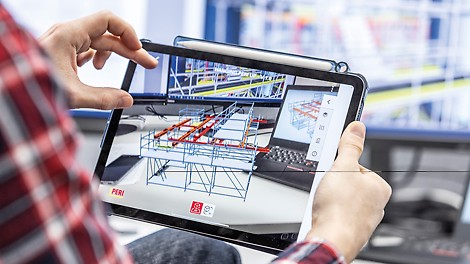

PERI shows innovative solutions for the construction site of tomorrow at bauma
From 24 to 30 October 2022, the PERI exhibition hall at the northern open-air site (booth FN 719) in Munich will have the motto “Shaping the Future”. In addition to impressive exhibits, live demonstrations, personal discussions and information events, PERI will have numerous other surprises in store. This will allow visitors to experience the comprehensive digital service and product portfolio as well as disruptive technologies at first hand.
28
jun
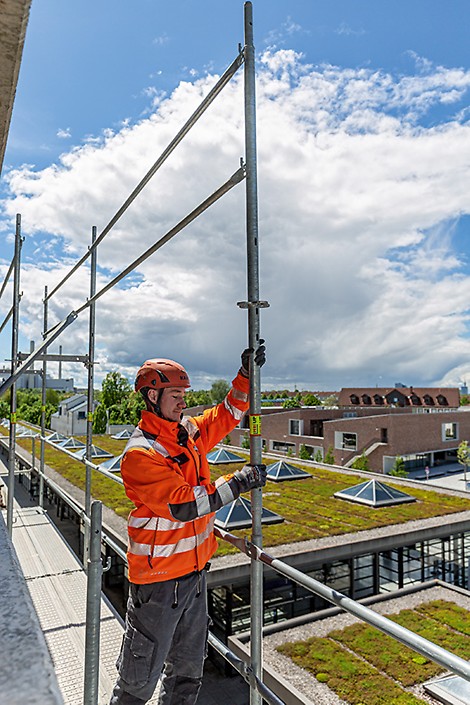
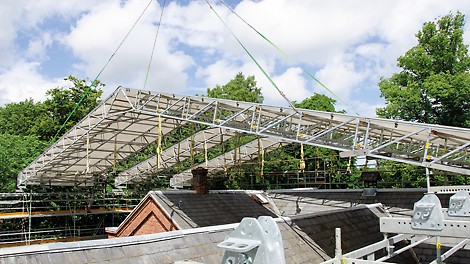

PERI shows the future of scaffolding at bauma
From 24 to 30 October 2022, the PERI exhibition hall at the northern open-air site (booth FN 719) in Munich will have the motto “Shaping the Future”. In addition to impressive exhibits, live demonstrations, personal discussions and information events, the scaffolding and formwork manufacturer will have many more surprises in store for visitors. Among other things, PERI will be showing completely new innovations for scaffolding as well as further developments of the digital planning tools.
28
jun
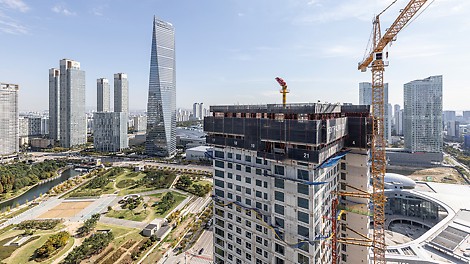
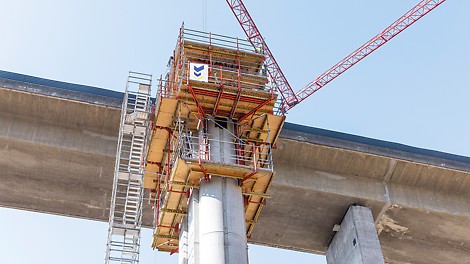
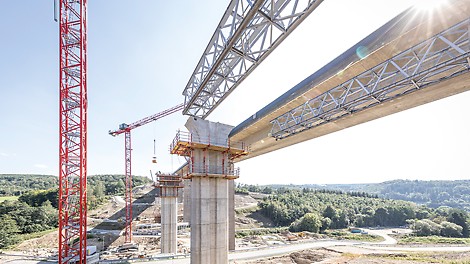
PERI at bauma: Innovative solutions for civil engineering
From 24 to 30 October 2022, the PERI exhibition hall at the northern open-air site (booth FN 719) in Munich will have the motto “Shaping the Future”. In addition to impressive exhibits, live demonstrations, personal discussions and information events, the formwork and scaffolding manufacturer will have many more surprises in store for visitors. Among other things, PERI will be showing innovations from the climbing formwork sector as well as further developments for civil engineering.
18
mai
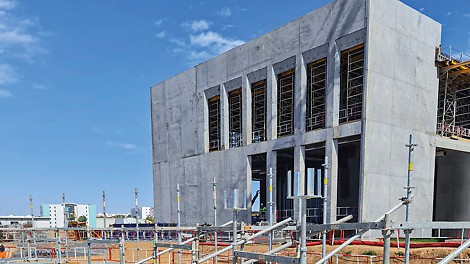


PERI enables nine-month construction period while maintaining high safety standards
PERI supported the construction of the new campus of the Mohammed VI Polytechnic University (UM6P) in Rabat, Morocco. With reliability and customer focus, PERI managed to meet the tight construction deadline of only nine months and helped to ensure that the project was carried out according to strict safety standards. For this construction project, PERI used a just-in-time approach to supply a comprehensive overall solution from a single source, including the new ALPHADECK and HANDSET Alpha Panel Formwork as well as PERI UP Scaffolding solutions.
11
abr
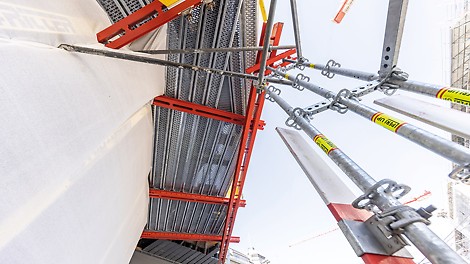

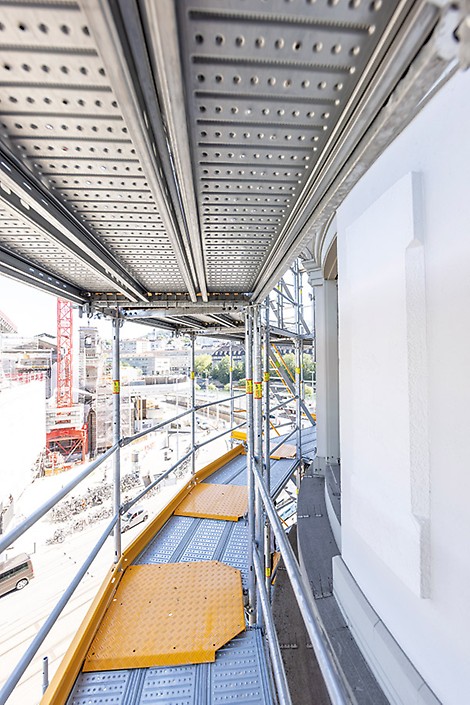
Mega Scaffolding Kit comes into its own in the heart of Zurich
Construction management firm Wanner + Fankhauser AG was responsible for planning and overseeing the general refurbishment of Bahnhofplatz 2 in Zurich. The building, built around 1890, was completely hollowed out with the exception of the steel beams, which were still intact.
07
mar
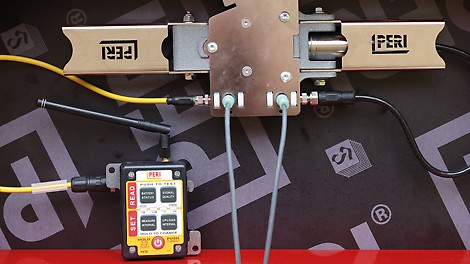
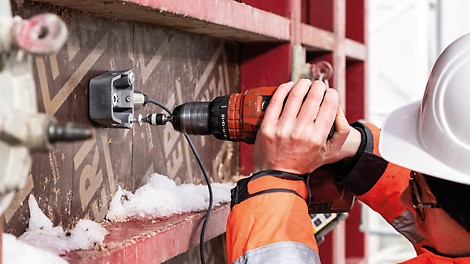
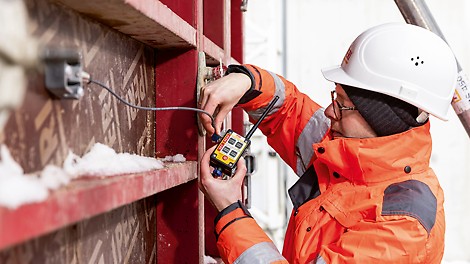
Significant increase in efficiency through digital monitoring of concrete pressure
The PERI InSite Construction (ISC) Pressure Monitoring Set for formwork systems has won the British Construction Industry Award for Product Innovation of the Year 2021 as well as being recognised in two categories at the Festival of Innovation and Technology 2021. The digital solution helps to optimise the concreting process on the construction site, thus saving time and cutting costs.
13
jan
